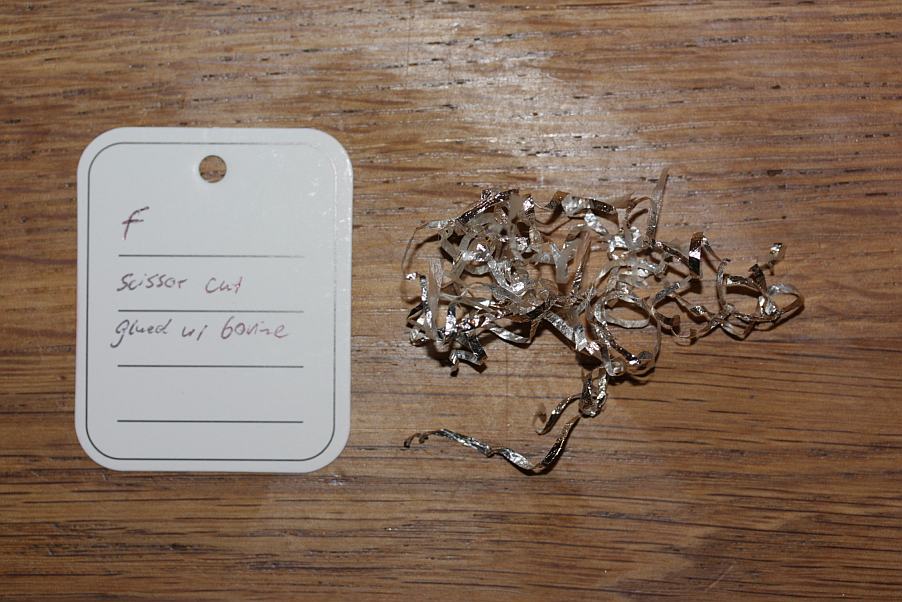Search the Blog
Latest Comments
The Things You Find Out.
At last year's Textile Forum, one of our topics was exploring how membrane gold threads may have been made. That is, in theory, a simple process - you take bovine membrane, gild it with silver-gilt leaf metal, then wind it around a fibrous core consisting of two spun vegetable fibre threads.
Simple, right? Well. As was to be expected, it's of course not so simple. First of all, how is the leaf metal attached to the membrane? There are a number of possibilities to do so. We tried using both oil and gelatin glue, and both worked. None of us was very proficient at gilding, but well, it was good enough for our purposes.
Next step: Cutting the silvered skin into strips. The original strips were less than one millimetre wide, and that caused problems as well - both with the cutting (which could be done with scissors, or with knives, we don't really know) and with the strips afterwards. Because it turned out that if you cut very thin strips, they start to curl up. Which is not very helpful for the following steps. There's also the question of how long the strips were... and there are no analyses that I know of which look at the length of the strips used to wind around cores. Or, in the case of flat strips, the length of these.
We found it much, much easier to wind a very long strip around the core than to use shorter ones, as the start and end always caused us problems. So we tried glueing the individual strips together... which basically worked very well, but we had issues with the glue: it was too brittle once dried.
So one of our next steps will be to try a different glue. There's also the possibility to modify animal glues with different additives to change their properties, including their elasticity, but we lack recipes for that, so we'll probably go with just the pure glues for now. (If you happen to know of any good, reliable recipes for making parchment glue or modifying it... they'd be very welcome!)
Things like that are the main reason why it's so important to do tests, and experiments, and try to recreate or reconstruct the actual working processes. Even if you're the best of researchers, it's just impossible to find out about all these small pitfalls by reconstructing a process on paper only. I'd never have considered how important the right choice of glue might be, or that the glue might be a crucial factor in how the membrane behaves - even though I've worked with glues a lot through my hobby bookbinding, and know from there that things will happen if you use the wrong glues, or too much or too little of them, or cover something on one side only. Which means I should have known, and as soon as the problem popped up, I went "oh yes, of course, that's an influence factor" - but before that... well. There's just too many things going on in any complex process (and most craft processes are complex processes) to consider them all without having the actual feedback from actual things being done.
And that all said, I will return to my preparation of some more tests in the project. It's guaranteed we will find some more questions, but I am hoping that we will find a few more answers too!




